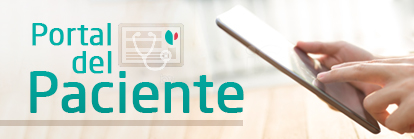A&E
Emergency department activity areas and physical spaces
- Admissions: Patient registration area. Option to register automatically at the self-service kiosk.
- Triage: 3 spaces for triage according to the Manchester system, with 5 priority levels.
- Waiting room: For patients awaiting triage and consultations with privacy-compliant call screens.
- Polyclinic circuit: Priority level 3-5 medical consultations. There are 8 consultation rooms + 1 nursing consultation room + 1 treatment room with chairs. More rooms may be made available in winter (2-3 consultations in the blood drawing room).
This circuit integrates high-resolution consultations for prompt attention to non-urgent pathologies, thereby avoiding unnecessary waiting times and preventing the circuit from becoming overwhelmed.
- Ophthalmology consultation: Ophthalmologic pathology attended to by ophthalmologists.
- Psychiatry Consultation: Psychiatric pathology attended to by psychiatrists.
- Treatment circuit: Outpatient surgical consultations. Priority level 3-5. There are 5 consultation rooms + 1 nursing consultation room + waiting/treatment room.
- Priority assessment circuit: Patients in cardiac arrest or life-threatening situation or patients included in codes, stroke, infarction, high-energy polytrauma. 1 place, expandable to two.
- Individual rooms circuit: Bedridden patients with high priority levels 1-3, or patients with less urgent priority level but in need of bed rest. There are 43 monitored places, always guaranteeing the privacy of the patient and their relatives.
- Observation: Patients either pending admission or with evolution in the emergency department theoretically under 24 hours. 17 beds.
- Conventional X-ray room: There are two stations inside the emergency room to perform conventional radiological examinations.
Techniques and procedures: Emergency Services Portfolio
Operating 24/7, the Emergency Department is specifically designed to address the urgent healthcare needs of the surrounding area, providing a competitive service and continuity of care, prioritising the appropriate level of attention for each patient and process.
The Emergency Department will prioritise care in order to provide an adequate response, in terms of time and resources, to the demand at different levels of care.
Control the airway and ventilation:
- Guedell and nasopharyngeal cannulas.
- Manual ventilation with bag and mask.
- Drug protocol for intubation.
- Pulse oximetry.
- Oxygen therapy and high-flow oxygen therapy.
- Orotracheal intubation.
- Cricothyroidotomy.
- Invasive and non-invasive mechanical ventilation (BiPAP, CPAP).
Cardiocirculatory supervision (maintaining rhythm and hemodynamics)
- Electrocardiographic monitoring.
- Basic and Advanced CPR.
- Electrical defibrillation.
- Synchronised cardioversion.
- External pacemaker.
- Non-invasive blood pressure monitoring.
- Central venous pressure monitoring.
Care for polytraumatised patients:
- Spinal immobilisation techniques.
- Limb immobilisation techniques.
- EcoFAST.
Management and control of intravenous infusions of drugs according to service guidelines
Control and Observation Procedures.
- Temperature measurement and monitoring.
- Pulse and respiratory rate measurement and monitoring.
- Non-invasive blood pressure measurement and monitoring.
- Continuous electrocardiographic monitoring.
- O2 saturation monitoring with curve.
- Hourly and time-based diuresis monitoring.
- Monitoring of other specific clinical signs: Glasgow, Ramson, Fine…
- Medication administration protocol.
Therapeutic/diagnostic procedures
- Emergency ultrasound: aorta, clinical echocardiography, renal and bladder ultrasound, pleural and pulmonary ultrasound, musculoskeletal and soft tissues, right hypochondrium ultrasound, polytrauma: FAST and eFAST.
- Peripheral venous access.
- Central venous access.
- Arterial puncture.
- Intraosseous route.
- Urinary catheterisation.
- Nasogastric and rectal catherisation.
- Continuous perfusion systems.
- Paracentesis.
- Thoracentesis.
- Lumbar puncture.
- Arthrocentesis.
- Aspiration of secretions.
Therapeutic procedures
- Sutures of skin and subcutaneous tissue wounds, without any complications or functional or aesthetic repercussions.
- Treatment, tamponade of bleeding and control of bleeding wounds.
- Extraction of foreign bodies in skin.
- Simple removal and healing of corneal foreign bodies.
- Simple extraction of foreign bodies from oropharyngeal cavity, nasal cavity and ear canal.
- Bandages, limb immobilisations and splints.
- Drainage of cutaneous abscesses.
- Reduction of haemorrhoidal prolapses and haemorrhoidal thrombectomies.
- Administration of aerosols with compressed air and oxygen.
- BiPAP and CPAP non-invasive ventilation.
- Sedation and analgesia under protocol.
- Topical and local anaesthesia.
- Cleaning, hygiene and care procedures and protocol.
- Blood product transfusion in accordance with protocol.
Hospital Universitario Fundación Jiménez Díaz
Avda. Reyes Católicos, 2
28040 Madrid Madrid
© 2026 Quirónsalud - All rights reserved























